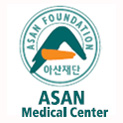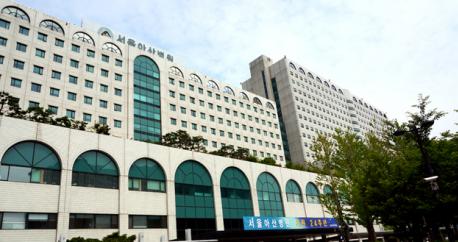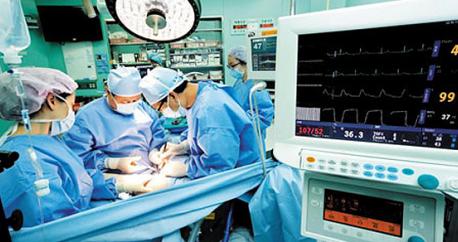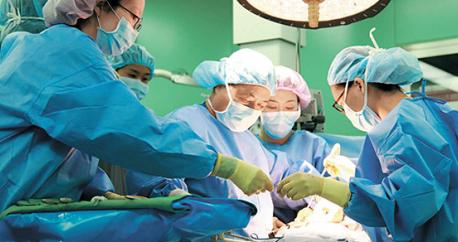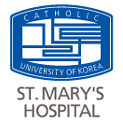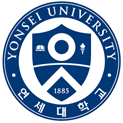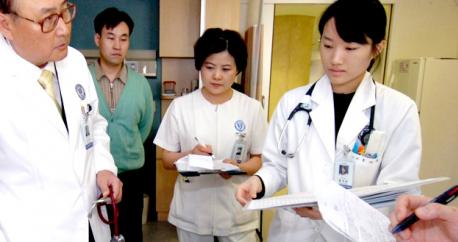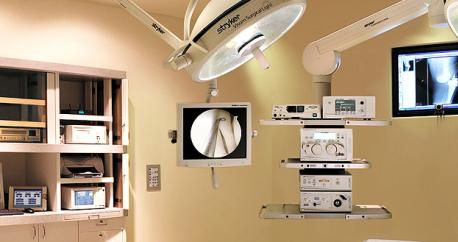Valvular heart disease involves one or more of the valves of the heart (the aortic and mitral valves on the left and the pulmonary and tricusepid valves on the right). Valve problems may be congenital or acquired due to other causes. Although some valvular diseases may be treated with medication, they often involves valve repair or replacement to an artificial heart valve.
The human’s heart is accomplished of 4 different rooms. Between these rooms, there are structures called ‘valves’ that are like sliding doors and these valves maintain the flow of blood within the heart in fixed directions and play the role of preventing regurgitation. The valve disease describes the abnormality in the control functions when the valve is ruined due to various reasons and is divided into the following classifications.
Types of Valvular Disease
- Mitral Valvular Diseases: Mitral Stenosis, Mitral Regurgitation
- Aortic Valvular Diseases: Aortic Stenosis, Aortic Insufficiency
- Tricupsid Valvular Diseases: Tricuspid Regurgitation, Tricuspid Insufficiency
- Pulmonic Valvular Diseases: Pulmonary Stenosis, Pulmonary Regurgitation
Causes and Inducing Factors of Valvular Disease
- Congenital Disease: Functional error caused by congenital factors.
- Acquired Disease: Rheumatic fever, regressive changes by aging, infection by endocarditis, aortic disease calcification of valvulitis, vessel disease, cardiomyopathy, tumor, drugs, radiation
Symptoms of Valvular Disease
- Respiratory Distress: This is the most frequently sensed symptom. It causes the patient to insufficiently perform daily life activities due to respiratory distress during exercise and in severe cases, the patient feels out of breath even when laying down.
- Lethargy or Dizziness: Patients may feel dizziness or weak when carrying on daily activities.
- Chest Discomfort: Patients may feel as if they have a heavy object on top of their chest or pressure on their chest when exposed to cold air or during exercises.
- Palpitations: Patients may feel irregular pulse or heart palpitations.
- Edema of Feet & Legs: Marks may remain after pressing on the swollen calves or feet.
- Abdominal Discomfort: Patients may feel a full stomach or indigestion.
- Weight Increase: Weight may increase due to edema even without excessive eating.
Diagnosis of Valvular Disease
Transthoracic Echocardiography
Examination to confirm various cardiac diseases or structural disorders by observing the structure or functions of the heart by using ultrasonic waves harmless to the body.
Transesophageal Echocardiography
Examination to view the parts of the heart in detail that could not be visible with general echocardiography through the method of observing the heart by inserting a small tube through the mouth and into the esophagus.
Cardiac Catheterization
Method of confirming disorders and the cardiac structures by injecting x-ray contrast medium by measuring the oxygen saturation and the pressure inside the heart by inserting a thin plastic tube(2~3mm in diameter, 1m in length) to the artery or the vein.
Nuclear Medicine
Examination to accurately evaluated the cardiac functions and conditions of blood flow by diagnosing cardiac diseases by special and safe photographing of the heart.
Magnetic Resonance Imaging (MRI)
Examination of diagnosing diseases by reconstructing all parts of the human body into cross sections or 3-dimensional images by calculating the signals that are created from the reaction of hydrogen atom inside the body by creating radio frequency pulse after laying the patient in the magnetic device created with large tub of 50~60cm in diameter formed with the magnetic field.
Treatments of Valvular Disease
Drug Therapy
Non-Surgical Treatments
Percutaneous Mitral Balloon Valvuloplasty: This is the method of expanding the valve where the stenosis has occurred by expanding the balloon after positioning it between the narrow valves by inserting the catheter with the balloon through the blood vessel to the part with the stenosis. This surgery has the advantages of not leaving surgical marks and reducing the period of hospitalization to reduce the costs.
Surgical Operations
Valvuloplasty : This treatment corrects the shape without removing the valve of patient with functional failure. It also uses the artificially created ring. It cannot be applied to all valvular diseases and is only possible to be performed on selected patients and patients may temporarily take anticoagulant(Warfarin) after the procedure depending on the operation.
Valve Replacement : This is the operation of changing the damaged valve with another valve in cases of severe damage where the valvuloplasty cannot be performed. There are three different types including the homograft, tissue valve and metallic valve.
KMH Recommended Tips
- Since the patients with valvular diseases and the recipients of the valve replacement have greater dangers of infective endocarditis and therefore, they must always inform the hospital of their disorder during visitations.
- While taking medication for treatment, the patient must be well aware for the application of the medication, must carry the list of their prescriptions at all times and show the prescriptions when visiting the hospital.
- Patients must inform their physicians when there are symptoms of infection such as neck pains, overall muscle pains and fever.
- Patients must take on low-sodium diets to remove edema, reduce cardiac pressure and restrict activities to cause exhaustion and respiratory distress.
- Patients must maintain a regular dietary habit and since vitamin K is influential to the anticoagulant, it is good to avoid excessive intake of such food products.
- Patients must avoid smoking since it is one of the 3 greatest risk factors to cause vascular diseases along with hypertension and hyperlipidemia.
- The physical condition must be always examined with regular hospital visitations and other precautions related to the treatments per diseases must be informed.
